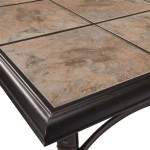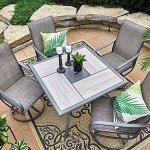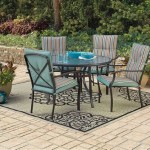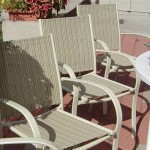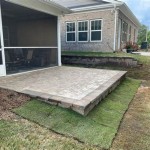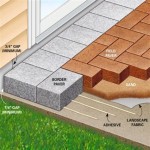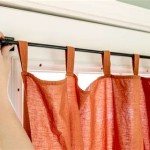Glass Sliding Doors for Patio: Enhancing Aesthetics and Functionality
Glass sliding doors for patios have become a popular choice for homeowners seeking to seamlessly blend indoor and outdoor living spaces. These doors offer a multitude of benefits, ranging from increased natural light and panoramic views to improved accessibility and energy efficiency. The design and installation of glass sliding doors require careful consideration to ensure long-lasting performance and aesthetic appeal, contributing to the overall value and enjoyment of a home.
The term "patio door" encompasses a variety of door styles that provide access to outdoor areas such as patios, decks, and balconies. While hinged doors are an option, sliding glass doors present a space-saving alternative, particularly in areas where swing space is limited. Their operation is simple and intuitive, allowing for easy passage between the indoors and outdoors. The large glass panels maximize natural light penetration, illuminating interior spaces and reducing the need for artificial lighting during daylight hours.
Furthermore, the expansive views afforded by glass sliding doors create a sense of openness and connection with the surrounding environment. This visual connection can enhance the perceived size of a room and contribute to a more relaxing and inviting atmosphere. The aesthetic versatility of glass sliding doors allows them to complement a wide range of architectural styles, from contemporary to traditional.
Key Point 1: Benefits of Glass Sliding Doors for Patios
Glass sliding doors offer numerous practical and aesthetic advantages for homeowners. Some of the key benefits include:
Natural Light and Views: The primary advantage is the abundance of natural light they allow into the home. Large glass panels maximize light penetration, creating brighter and more cheerful interior spaces. This reduces reliance on artificial lighting, potentially lowering energy bills. Simultaneously, the expansive views of the outdoors provide a visual connection with nature, which can be particularly appealing in areas with attractive landscaping or scenery. The ability to seamlessly view the outdoors also expands the perceived living space of a home.
Space Efficiency: Unlike hinged doors, sliding doors do not require swing space, making them ideal for smaller patios or rooms where maximizing space is critical. The doors slide horizontally along tracks, minimizing the footprint required for operation. This space-saving feature allows furniture to be placed closer to the doorway without obstructing its functionality. The ability to optimize space contributes to a more functional and comfortable living environment.
Ease of Operation: Modern glass sliding doors are designed for smooth and effortless operation. High-quality rollers and tracks ensure that the doors glide easily, even with frequent use. This ease of operation makes them accessible to individuals of all ages and abilities. Many designs incorporate features such as multi-point locking systems for enhanced security and weatherstripping to prevent drafts and leaks.
Enhanced Ventilation: Sliding doors can be easily opened to provide fresh air and ventilation. This is particularly beneficial during moderate weather conditions, allowing homeowners to enjoy the outdoors without sacrificing comfort. The controlled ventilation helps to regulate indoor temperatures and improve air quality. Screens can be added to prevent insects from entering the home while maintaining airflow.
Aesthetic Appeal: Glass sliding doors are aesthetically versatile and can complement a variety of architectural styles. They are available in a range of frame materials, finishes, and glass options to suit individual preferences and design requirements. The sleek and modern appearance of sliding doors can enhance the overall curb appeal of a home. The large glass panels create a focal point, drawing the eye and adding visual interest to both the interior and exterior.
Security Features: Modern glass sliding doors incorporate various security features to protect against unauthorized entry. Multi-point locking systems engage at multiple points along the frame, providing enhanced resistance to forced entry. Tempered or laminated glass options offer increased durability and shatter resistance. Security bars or alarms can be added for an extra layer of protection. These features contribute to the safety and security of the home.
Energy Efficiency: While older glass sliding doors were often criticized for poor energy performance, modern designs incorporate features that significantly improve energy efficiency. Low-E (low-emissivity) coatings on the glass reflect heat away from the home in the summer and retain heat in the winter, reducing energy consumption for heating and cooling. Insulated glass units (IGUs) with multiple panes of glass and gas fills provide added insulation. Tight weatherstripping prevents drafts and leaks, further minimizing energy loss. Energy-efficient glass sliding doors can contribute to lower energy bills and a more comfortable indoor environment.
Key Point 2: Types of Glass Sliding Doors and Materials
The selection of patio doors involves considering different types and materials to suit specific needs and aesthetic preferences. Understanding the available options is crucial for making an informed decision.
Standard Sliding Doors: These are the most common type of glass sliding door, consisting of two or more panels that slide horizontally along a track. One panel is typically fixed, while the other slides open. These doors are relatively cost-effective and easy to install, making them a popular choice for many homeowners.
Multi-Slide Doors: Also known as bi-parting doors, these systems feature multiple panels that slide and stack against one another when open. This creates a wider opening than standard sliding doors, providing a more seamless transition between indoor and outdoor spaces. Multi-slide doors are ideal for larger patios or areas where maximizing the opening width is desired. They offer a dramatic and visually appealing solution for connecting living spaces.
Pocket Doors: Pocket doors slide into a recessed pocket within the wall, completely disappearing from view when open. This provides an unobstructed opening and maximizes usable space. Pocket doors require specialized framing and installation, which can increase the cost. However, the seamless integration with the wall makes them a desirable option for those seeking a clean and minimalist aesthetic.
Telescoping Doors: Similar to multi-slide doors, telescoping doors feature multiple panels that slide and stack. However, unlike multi-slide doors, telescoping doors overlap as they slide, rather than stacking completely against one another. This design allows for a narrower stack width, which can be beneficial in situations where space is limited.
Frame Materials: The frame material significantly impacts the door's appearance, durability, and energy efficiency. Common frame materials include:
Vinyl: Vinyl frames are a popular choice due to their affordability, durability, and low maintenance requirements. Vinyl is resistant to moisture, rot, and insect damage. It also offers good insulation properties, contributing to energy efficiency. Vinyl frames are available in a range of colors and styles to complement various architectural designs.
Aluminum: Aluminum frames are known for their strength and durability. They are lightweight and resistant to corrosion, making them suitable for coastal environments. Aluminum frames can be powder-coated in a variety of colors and finishes. However, aluminum is a good conductor of heat, so thermally broken options are recommended for improved energy efficiency.
Wood: Wood frames offer a classic and elegant aesthetic. They provide excellent insulation properties and can be customized to match existing woodwork in the home. However, wood requires regular maintenance, such as painting or staining, to protect it from moisture and rot. Wood frames are typically more expensive than vinyl or aluminum options.
Fiberglass: Fiberglass frames are a premium option that combines the benefits of vinyl and wood. They are strong, durable, and resistant to moisture, rot, and insect damage. Fiberglass frames offer excellent insulation properties and can be painted or stained to match any décor. Fiberglass frames are typically more expensive than other frame materials.
Glass Options: The type of glass used in the sliding door also affects its performance and aesthetic appeal. Common glass options include:
Tempered Glass: Tempered glass is heat-treated to make it stronger and more resistant to breakage. If broken, it shatters into small, dull fragments, reducing the risk of injury. Tempered glass is a standard safety feature in glass sliding doors.
Laminated Glass: Laminated glass consists of two or more layers of glass bonded together with a layer of plastic interlayer. This type of glass is highly resistant to impact and shattering. It also provides sound dampening properties and blocks harmful UV rays. Laminated glass is often used for security purposes and in areas where noise reduction is desired.
Low-E Glass: Low-E (low-emissivity) glass has a thin, transparent coating that reflects heat away from the home in the summer and retains heat in the winter. This helps to reduce energy consumption for heating and cooling. Low-E glass is an important feature for energy-efficient glass sliding doors.
Insulated Glass: Insulated glass units (IGUs) consist of two or more panes of glass separated by an air or gas-filled space. This provides added insulation, reducing heat transfer and improving energy efficiency. IGUs are typically used in combination with low-E glass to maximize energy savings.
Key Point 3: Installation and Maintenance Considerations
Proper installation and regular maintenance are crucial for ensuring the long-term performance and durability of glass sliding doors. Neglecting these aspects can lead to problems such as drafts, leaks, and operational difficulties.
Professional Installation: While DIY installation may seem tempting, professional installation is highly recommended for glass sliding doors. Experienced installers have the knowledge and tools necessary to ensure that the doors are properly aligned, sealed, and secured. Incorrect installation can lead to problems with operation, energy efficiency, and weather resistance. Hiring a qualified installer is an investment that can save time, money, and frustration in the long run.
Proper Framing: The door frame must be square and level to ensure proper operation. The rough opening should be sized correctly to accommodate the door unit. The frame should be securely fastened to the surrounding wall structure. Any gaps or voids should be properly insulated to prevent drafts and leaks.
Sealing and Weatherstripping: Effective sealing is essential to prevent air and water infiltration. Weatherstripping should be installed around the perimeter of the door to create a tight seal. Caulking should be applied to all joints and seams to prevent leaks. Regularly inspect the weatherstripping and caulking for signs of wear or damage and replace as needed.
Track Alignment: The tracks must be properly aligned and level to ensure smooth operation. Clean the tracks regularly to remove dirt and debris. Lubricate the rollers with a silicone-based lubricant to keep them moving freely. Adjust the rollers as needed to maintain proper alignment.
Drainage: Ensure that the patio area has proper drainage to prevent water from pooling around the door. Standing water can damage the door frame and contribute to leaks. Clean any debris from the drainage channels regularly to ensure proper water flow.
Glass Cleaning: Clean the glass regularly with a mild soap and water solution. Avoid using abrasive cleaners or scouring pads, as these can scratch the glass. Dry the glass with a soft cloth or squeegee to prevent streaks. Consider using a glass cleaner specifically designed for low-E glass.
Hardware Maintenance: Inspect the door hardware regularly, including the handles, locks, and rollers. Tighten any loose screws or bolts. Lubricate the moving parts with a silicone-based lubricant. Replace any damaged or worn hardware promptly.
Annual Inspection: Conduct an annual inspection of the glass sliding doors to identify potential problems early on. Check for signs of wear, damage, or deterioration. Address any issues promptly to prevent them from escalating into more costly repairs. A well-maintained glass sliding door will provide years of reliable performance and enjoyment.

72 In X 80 Double Sliding Patio Door Clear Low E

Patio Doors Sliding Door Hst Hs 6

Sliding Glass Door Ideas Pella

9 Things To Know About Sliding Glass Patio Doors Brennan

Big Sliding Glass Doors Or Multifold Patio Which Is Better

108 In X 80 White Right Hand Fiberglass Full Lite Loe Glass Stacking Sliding Patio Door

Sliding Patio Doors Alside

Exploring Sliding Patio Door Configurations Options Styles Bayview Windows

Reliabilt 60 In X 80 Tempered White Vinyl Universal Sliding Patio Door With Screen

Replacement Sliding Glass Doors Renewal By Anderson

